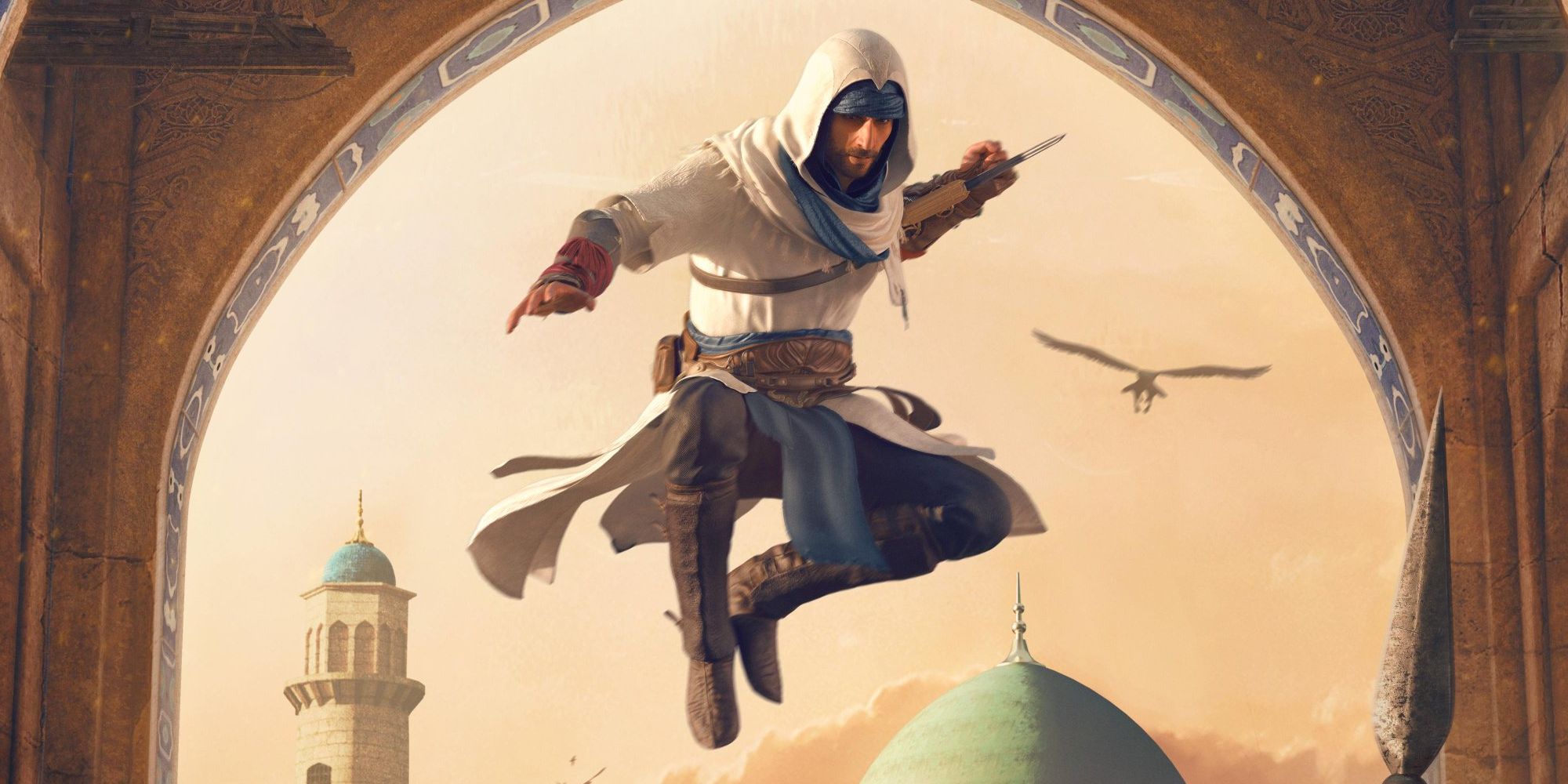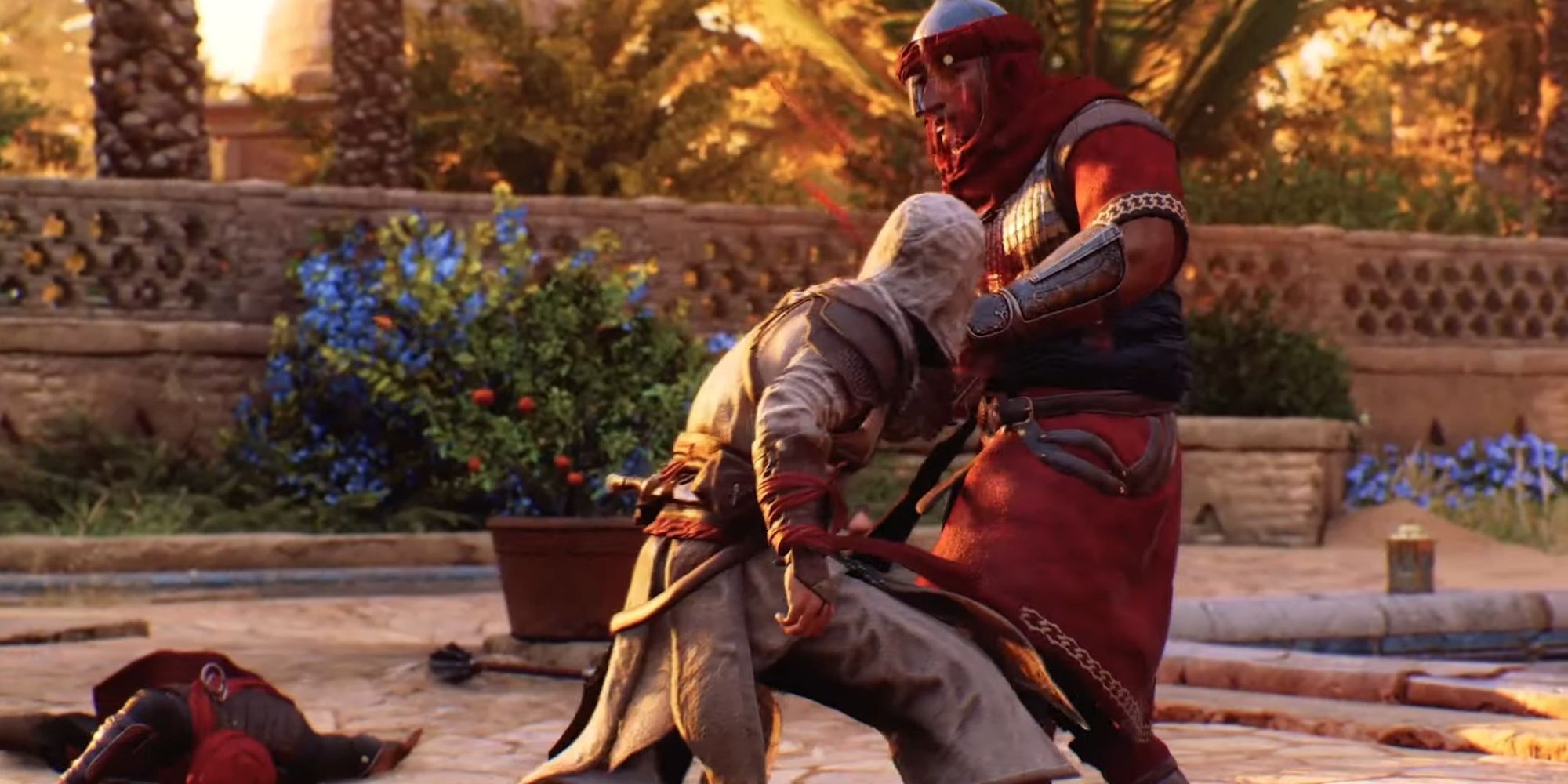Assassin’s Creed Mirage looks good. After three gigantic games that transformed the series into sprawling action RPGs, Mirage is taking AC back to its stealth-action roots. I've enjoyed the new direction, but I’m stoked to see a major release scaling down for what appears to be a more focused game. But Ubisoft’s boring house style is preventing me from getting too excited for Mirage, even if everything else about it seems right up my alley.
For most of the time I’ve been playing games, Ubisoft titles have had a certain look. They’re triple-A, with the sheer size and breadth of content that comes along with it. But, the graphics in Ubisoft games almost always look a little off, slightly rougher than you would expect given the obvious production value in most other areas.
It’s especially noticeable when you compare them with their competition. Grand Theft Auto 5 and Watch Dogs 2 are both huge open-world games set on the west coast. But GTA has a fidelity that Watch Dogs 2 just doesn’t. Some of that is Rockstar's obsession with details, which has led to notorious crunch on many of its games, so that could be an unfair comparison. But, compare Assassin's Creed Valhalla to most other triple-A open-world games and you'll see the same thing. It looks worse than Ghost of Tsushima and Horizon Forbidden West, both made by studios with less experience building open-worlds than Ubisoft. The textures aren't quite as detailed, the animations are a little more canned, the lighting is a little flat. Ubisoft’s games always look like they’re in the same ballpark as other triple-A titles, but lacking the layer of polish that makes those titles still look good up close.
Ubisoft could get around this issue by embracing more stylized aesthetics. The Legend of Zelda: The Wind Waker still looks good after two decades because Nintendo embraced a cartoony style that wouldn't go out of fashion as polygon counts skyrocketed. But that kind of stylization is something the company largely avoids in its biggest releases. There have been games, like Immortals: Fenyx Rising, that embrace more exaggerated visuals, but those are rare for Ubisoft's open-world titles. Generally, overt stylization is reserved for Rayman and his Raving Rabbids or other games aimed at kids, like Starlink: Battle for Atlas.
No matter how many boxes Assassin's Creed Mirage checks on paper, it's still being brought down by a mediocre presentation. Ubisoft has an impressive pipeline with studios all over the globe working together on its flagship releases, allowing it to make gigantic games with fewer reports of severe crunch than have plagued its competitors (not that Ubisoft is a perfect workplace by any means).
But it often results in a designed-by-committee aesthetic that looks worse than most other triple-A games on the market. With Mirage, Ubisoft has seized an opportunity to buck trends, with a smaller game that rejects the notion that each new game in a series should be exponentially bigger than the one before. It would have been nice to see the developer buck the graphical trends it has set for itself, too. Ubisoft has a house style, but that style needs to change.


